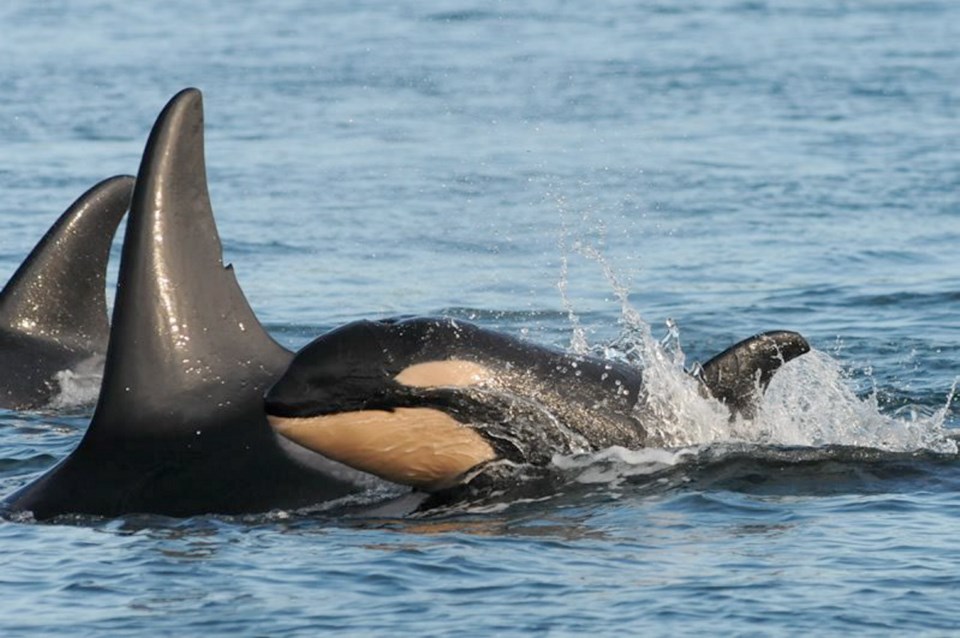A new baby orca has made an appearance in the Salish Sea, for a near-record of eight healthy births in the area this year.
Ken Balcomb, senior scientist at the Center for Whale Research in Friday Harbor, Washington, said his group confirmed on Thursday the existence of the new baby, believed to have been born about three weeks ago.
Balcomb said the previous known birth record was set in 1977 with nine births in the Salish Sea, encompassing Puget Sound and the Juan de Fuca, Haro and Georgia straits. Normally, researchers expect to see about three births a year in the area.
The calf is part of a family group scientists have named “J Pod,” now 29 individuals strong. Two other groups exist in the same area — K Pod and the larger L Pod — for a total population of 84 resident individuals.
Unlike transient orcas, which migrate up and down the coast and subsist mostly on marine mammals, residents stay close to their home range and eat fish, mostly salmon.
Balcomb said it’s too early to determine the sex of the new baby, named J54.
It’s also too soon to start celebrating, since young orcas suffer a fairly high death rate.
“Once they get past that first year, we figure they are out of the woods for a while,” he said.
That said, all of the calves born in the area this year are alive and swimming.
“We have — knock on wood — been pretty good this year,” Balcomb said. “All the babies are surviving.”
He said the young suckle milk for the first seven to 12 months. They move on to eating fish pieces provided by the mothers.
“The main point I keep trying to make is [that] they are predators and they have to have food,” Balcomb said. “And their most important food is chinook salmon.”
It’s important to restore the wild salmon in the rivers of B.C. and the Pacific Northwest, he said.



